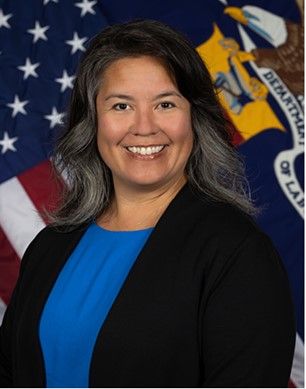Women comprise only about 14% of registered apprentices, according to the Department of Labor, although they account for half of the workforce.
The department is taking steps to increase that number. Last week it announced $5 million in grants to help up to 14 community-based organizations to attract and support women in registered apprenticeship programs, largely in construction, manufacturing and cybersecurity.
In past grant cycles, the Women in Apprenticeship and Nontraditional Occupations grants have been around $250,000 to $1 million, funding about five grants a year, said Wendy Chun-Hoon, director of the Labor Department’s Women’s Bureau.
Here, Chun-Hoon talks with Construction Dive about the grants, the state of construction labor and how underrepresented groups can help alleviate the industry’s labor woes.
The following has been edited for brevity and clarity.
CONSTRUCTION DIVE: Can you tell me a little bit about this grant program?
Wendy Chun-Hoon: We announced the fiscal year 2023 funding opportunity last Friday in New York City, which was pretty exciting because we did it at a current WANTO grantee. Their name is Nontraditional Employment for Women, and they were graduating a class of pre-apprentices.
The authorizing legislation for WANTO actually goes back some 30 years, and we have had grantmaking authority here at the Women’s Bureau for the past six years or so. The entire program is designed as a technical assistance grant to community-based organizations like NEW, which is providing technical assistance to employers, to unions and then increasingly to public sector project owners on how to recruit, how to train, how to retain — which often involves a lot of support in mentoring women in the many occupations that they’re still vastly underrepresented in.
What are the biggest challenges for getting women into the trades?

Wendy Chun-Hoon
Permission granted by Department of Labor
One of the graduates from Friday, her name’s Alicia, said she had always liked doing electrical rewiring. She got in trouble with her dad when she was a kid for rewiring their TV when it stopped working. I think this is a very common story. She got discouraged from pursuing that path to the electrical trades.
So she grows up in Jamaica, comes over to the States and finds the only options open to her were in home care. And as she is fixing the kids’ toys, it’s the mom who notices and says, “Hey, you look like you’re always fixing these things, have you ever heard of this program NEW?” And lo and behold, eight weeks later she’s through her preapprenticeship program.
I think the very common story is, you’ve got to see it to be it, and there aren’t enough women in these jobs. So, a big part of the first step is to make sure that women know that these jobs are available to them, and here’s the pathway to get into them.
We’ve heard other stories about similar barriers to entry. One common barrier is childcare. A lot of these women have talked about how hard it is to make that pivot to a career while they have young kids to care for. So, I should specifically mention that up to 25% of the WANTO grant to the community-based organization is funding or investing in supportive services. Those supportive services can address all the barriers to entry: tools and equipment, last mile transportation, access to training programs and access to childcare.
How does WANTO measure the success of a grant program like this?
I will start by acknowledging that WANTO is small. It’s a small footprint. Maybe you can tell my excitement through this conversation about how much power I think it has and how much bigger I think it should be. But it’s a pretty small footprint.
The amount that Congress authorized in the omnibus last year is only $5 million. When we’re thinking about the grant dollars across the federal government, I believe that we are one of the more effective programs. We have reached 10,000 women over the past six grant cycles to be part of or join pre-apprenticeship programs, apprenticeship programs, get safety training, get trade classes, career counseling, et cetera. But we’ve reached — back to my earlier about “See it to be it” — we’ve reached three times that — something like 30,000 women.
For example, the new grantee that we were with on Friday said they put up a metro poster and instantly got 500 people calling to join their classes. Very simple things like that have an impact, so the reach is important.
I think 97% of the women who come through WANTO-funded interventions are gaining that certificate or that industry license or some kind of credential. That’s pretty significant, including for a small grant program like this, that is designed to be technical assistance, not even direct service.
If I’m a stakeholder in construction, what should I take away from WANTO’s grant program?
These jobs are growing. We don’t currently have the workforce to meet the demand. Engaging a skilled, diverse, inclusive workforce — that will be the future of the trades. The more that we can get these lessons, these strategies that have proven to work and the quicker we can replicate them, the more we can meet that workforce demand that every contractor is facing.
This is really the moment, right? Because the money is starting to hit the street in states, the projects are starting to get bid on, the partnerships starting to align. So, for the contractors, for the unions, for the public sector partners who will be absorbing these dollars, to really look for those partners similar to the WANTO grantees to help them quickly embed those lessons and those effective practices, the quicker we’ll get there in terms of meeting the workforce demand.
